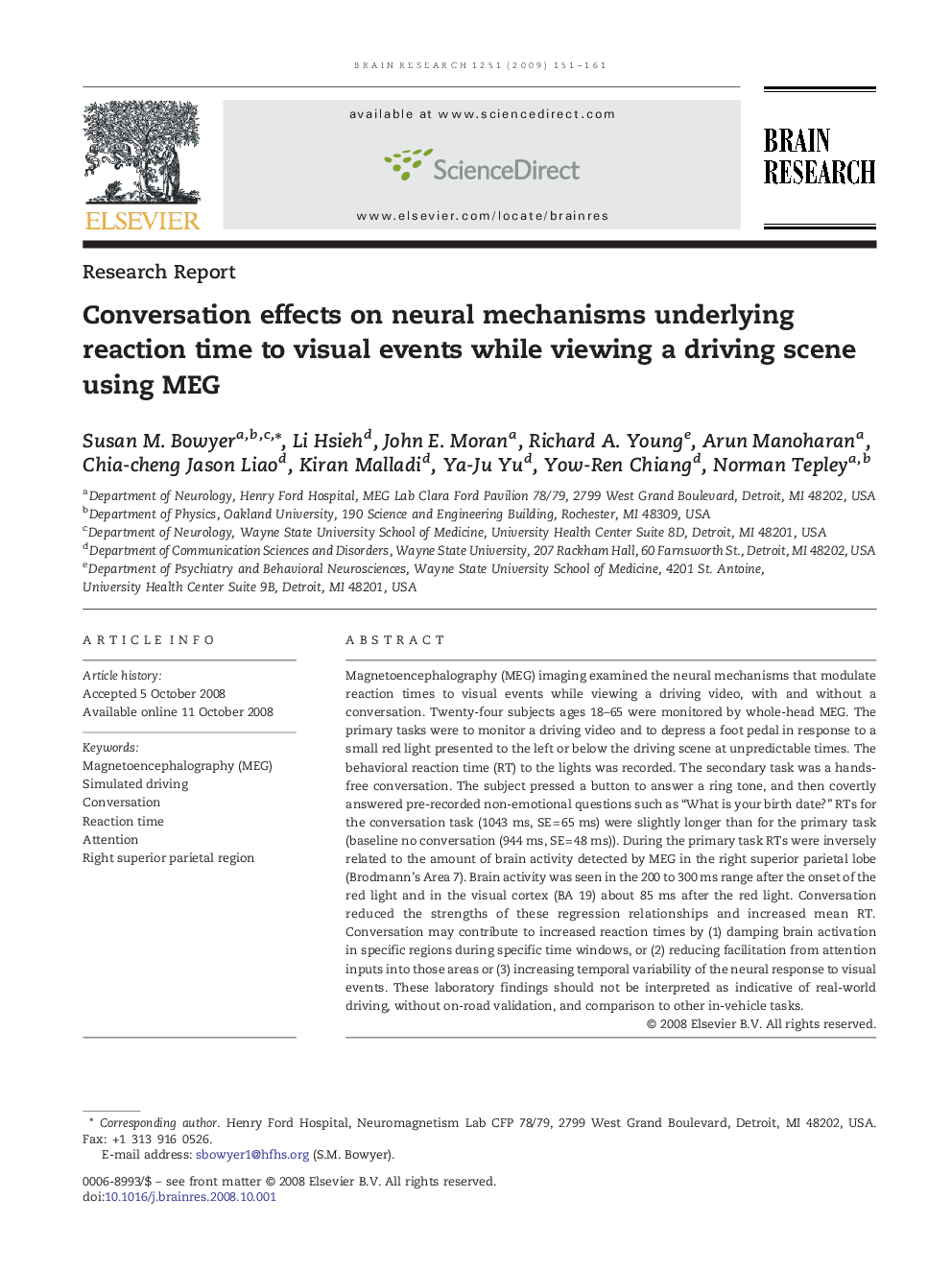| کد مقاله | کد نشریه | سال انتشار | مقاله انگلیسی | نسخه تمام متن |
|---|---|---|---|---|
| 4328685 | 1614188 | 2009 | 11 صفحه PDF | دانلود رایگان |

Magnetoencephalography (MEG) imaging examined the neural mechanisms that modulate reaction times to visual events while viewing a driving video, with and without a conversation. Twenty-four subjects ages 18–65 were monitored by whole-head MEG. The primary tasks were to monitor a driving video and to depress a foot pedal in response to a small red light presented to the left or below the driving scene at unpredictable times. The behavioral reaction time (RT) to the lights was recorded. The secondary task was a hands-free conversation. The subject pressed a button to answer a ring tone, and then covertly answered pre-recorded non-emotional questions such as “What is your birth date?” RTs for the conversation task (1043 ms, SE = 65 ms) were slightly longer than for the primary task (baseline no conversation (944 ms, SE = 48 ms)). During the primary task RTs were inversely related to the amount of brain activity detected by MEG in the right superior parietal lobe (Brodmann's Area 7). Brain activity was seen in the 200 to 300 ms range after the onset of the red light and in the visual cortex (BA 19) about 85 ms after the red light. Conversation reduced the strengths of these regression relationships and increased mean RT. Conversation may contribute to increased reaction times by (1) damping brain activation in specific regions during specific time windows, or (2) reducing facilitation from attention inputs into those areas or (3) increasing temporal variability of the neural response to visual events. These laboratory findings should not be interpreted as indicative of real-world driving, without on-road validation, and comparison to other in-vehicle tasks.
Journal: Brain Research - Volume 1251, 28 January 2009, Pages 151–161